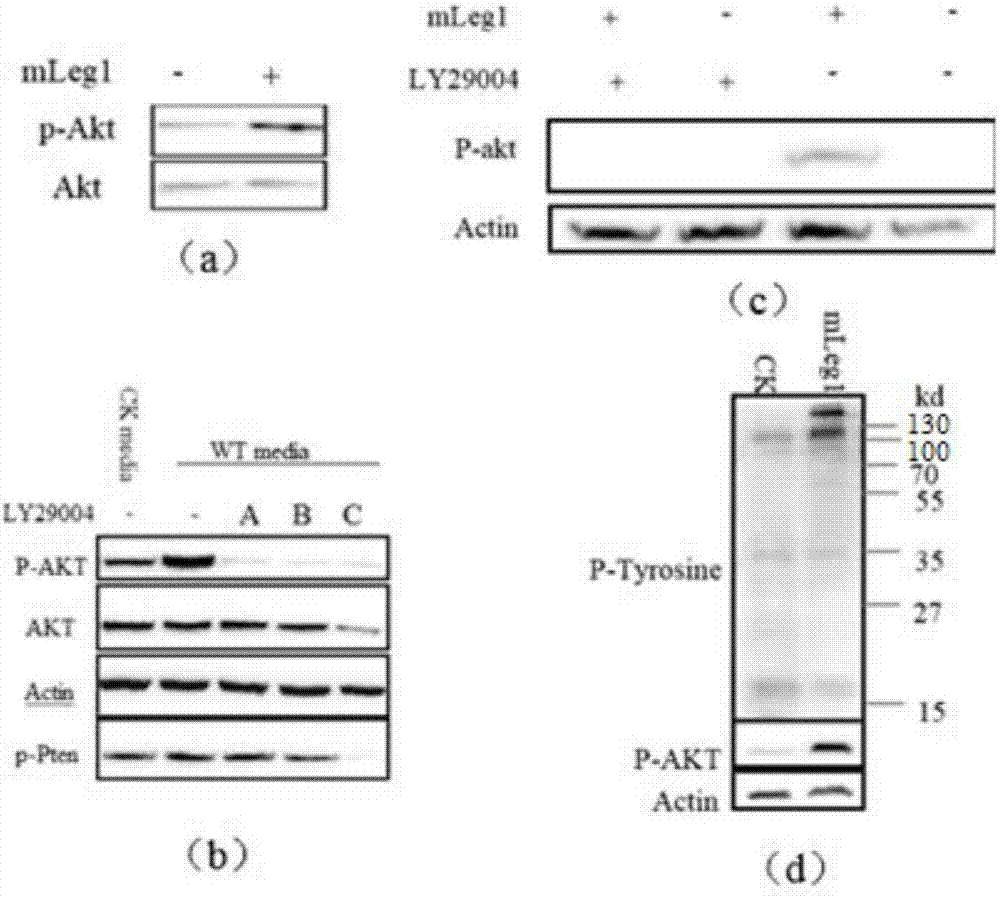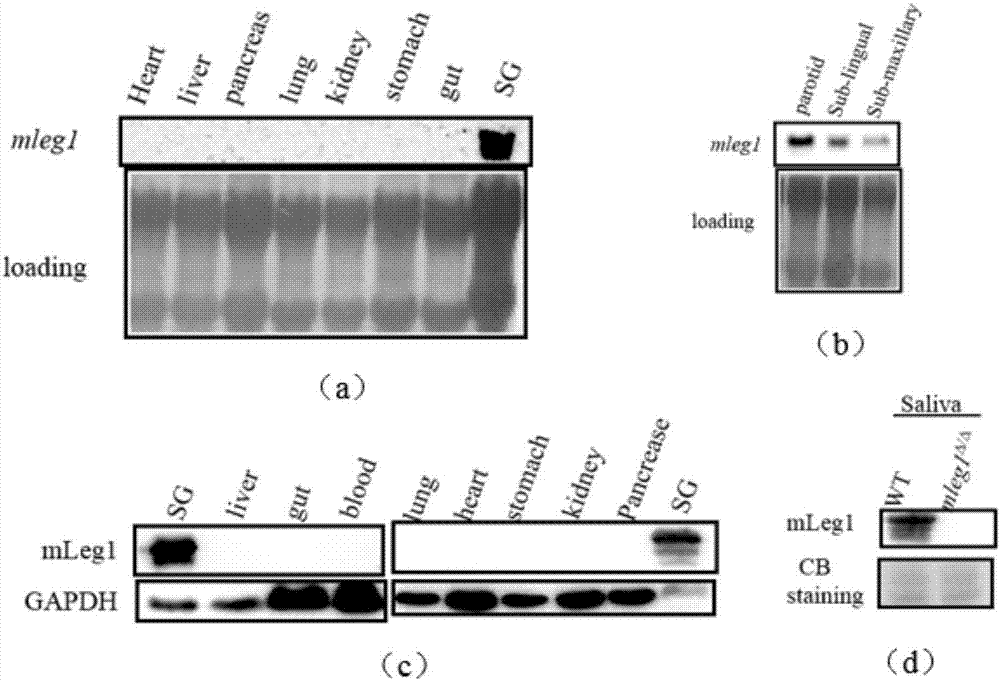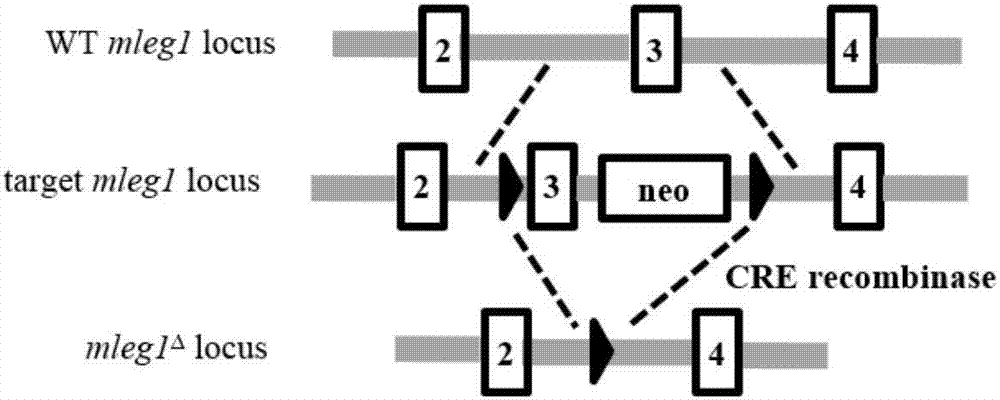A kind of hleg1 gene and its application and medicine
A gene and drug technology, applied in the hLeg1 gene and its application and drug fields, can solve the problem of few drug targets, and achieve the effect of promoting fat synthesis and reducing fat accumulation
- Summary
- Abstract
- Description
- Claims
- Application Information
AI Technical Summary
Problems solved by technology
Method used
Image
Examples
Embodiment 1
[0048] 1. Northern blot analysis of the expression of mLeg1 in different tissues
[0049] The 8-week-old male mice with C57BL / 6 background were used as research objects, and the expression profile of mLeg1 gene was detected by Northern blot analysis. Using the antisense strand of the mLeg1 gene as a probe, Northern blot analysis was performed to analyze a series of digestive organs (heart, liver, pancreas, lung) of mLeg1 gene mice including the liver. , kidney (kidney), stomach (stomach), intestine (gut), salivary gland (SG)).
[0050] The experimental method of Northern blot analysis is as follows.
[0051] 1.1 RNA extraction:
[0052] 1.1.1 Take the tissue that needs to extract RNA, and grind it with liquid nitrogen until there are no obvious particles. During the grinding process, keep liquid nitrogen to prevent RNA degradation.
[0053] 1.1.2 Take 50-100mg sample and add 1ml Trizol ( Reagent, Life Technologies, Cat.no.15596-026), fully homogenized by pumping with a 26...
Embodiment 2
[0075] Since the homolog protein Leg1 of mLeg1 protein in zebrafish is a secreted protein, the above results have shown that mLeg1 gene is mainly expressed in salivary glands, but its mLeg1 protein may also be secreted and transported to other tissues to play a role. Therefore, the inventors of the present invention extracted the total protein from different tissues of mice, and detected the distribution of mLeg1 protein in different tissues by Western Blot.
[0076] Western Blot was used to detect the distribution of mLeg1 protein in different tissues. The experimental method is as follows.
[0077] 2.1 Protein extraction:
[0078] After the mice died suddenly, the target tissues (SG, liver, gut, blood, lung, heat, stomach, kindney, pancrease) were removed, placed in 1.5ml centrifuge tubes, and quickly frozen in liquid nitrogen to prevent degradation. When extracting protein, take out the sample, grind and pulverize by liquid nitrogen, collect the sample powder in a centrif...
Embodiment 3
[0086] Since the salivary gland is a secretory gland, its most important function is to secrete saliva, and mLeg1 is also a secretory protein. Therefore, the inventors of the present invention investigated whether mLeg1 is secreted into saliva.
[0087] The content of mLeg1 in saliva was detected by Western Blot. Specific steps are as follows.
[0088] 3.1 Saliva collection: 0.5 mg / kg of Pilocarpine (Sigma) was injected intraperitoneally into the mice, and a capillary was placed in the mouth of the mice to drain and collect the secreted saliva. Pilocarpine, a drug used to treat dry mouth, stimulates a flood of saliva. The saliva secreted by wild-type mice and mLeg1 systemic knockout mice (how to obtain them are described below) were collected respectively.
[0089] 3.2 Saliva treatment: the collected saliva was boiled at 100° C. for 5 minutes with 5x Laemmli buffer (10% SDS, 250 mM Tris-HCl, 0.1‰ Bromphenol blue, 500 mM DTT, 50% Glycerol) of 1 / 5 saliva volume.
[0090] 3.3...
PUM
 Login to View More
Login to View More Abstract
Description
Claims
Application Information
 Login to View More
Login to View More - Generate Ideas
- Intellectual Property
- Life Sciences
- Materials
- Tech Scout
- Unparalleled Data Quality
- Higher Quality Content
- 60% Fewer Hallucinations
Browse by: Latest US Patents, China's latest patents, Technical Efficacy Thesaurus, Application Domain, Technology Topic, Popular Technical Reports.
© 2025 PatSnap. All rights reserved.Legal|Privacy policy|Modern Slavery Act Transparency Statement|Sitemap|About US| Contact US: help@patsnap.com



